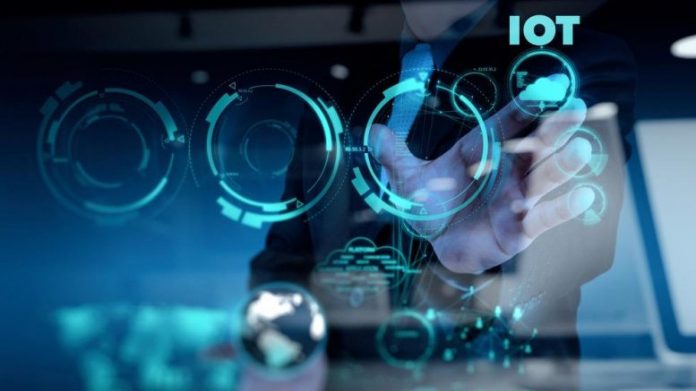Whether a business has its own logistics division or outsources warehousing and fulfilment to a third-party, logistics as we know it is set for a dynamic change and the technology powering this development is the Internet of Things (IoT). Here we’ll look at the technologies it relies upon and the impact it is having.
IoT and asset tracking
Better asset tracking is central to the development of supply chain management. Today, the IoT provides the technology businesses need to better understand their operations, make smarter decisions, improve the use of time, and cut costs. Indeed, it has become so useful that over 70 per cent of manufacturing and retail enterprises have already begun to integrate IoT into their supply chain operations.
One key technology that is having an impact on logistics is RFID (Radio Frequency Identification). RFID tags, such as those available from Universal Smart Cards, are small, inexpensive chips that can be attached to almost any item and provide information about it. RFID tags communicate with readers over short distances and the readers themselves can be linked wirelessly over the internet to a central computer system. This enables inventory and assets to be tracked throughout the entire warehousing process and, for some products, through the manufacturing process, too.
A specialized form of RFID is near field communication (NFC), which uses radio signals that transmit over very short distances, some as small as only a few centimeters. One of the advantages of these tags is that many mobile phones have inbuilt NFC capabilities, enabling staff to use their smartphones as an NFC reader. The short distance over which an NFC tag can transmit also makes it highly secure – it’s the same technology that is used in contactless payment cards.
Once out of the warehouse and on the road, another technology, Low Power Wide Area Networks (LPWANs), can be used to track the items during transit. These IoT trackers use long-range networks to monitor item locations and can do so in real-time. Where these networks are not available, such as in remote areas, satellite tracking can be used as a backup or alternative.
The tracking of items doesn’t end on the road, however. When items arrive in store, the use of Bluetooth tags and beacons enables retailers to have real-time tracking of inventory. When a customer asks if a specific item is in stock, staff will have access to up-to-the-minute stock levels. Managers will also have a better understanding of when to order new stock and which products are selling well. Where customers’ smartphones have Bluetooth turned on, retailers can also use it to monitor footfall and send customers marketing messages.
The IoT connected fleet
Besides tracking products, another key requirement for logistics business is to monitor their fleet. The IoT now enables them to know exactly where every vehicle is at any time. It can also let them know about the condition of the vehicle and of its cargo.
In a similar way to inventory and warehouse management, businesses can use tracking technologies such as GPS, RFID, and LPWAN to collect real-time data from sensors on their vehicles. This is becoming useful in several sectors. In retail, it is being used to track delivery fleets, in public transport, it is used to track buses, trains, taxis, and other means of people transport and, in the service sector, it helps businesses know where fleets of workers are while out doing their jobs.
The benefits of real-time fleet tracking are potentially enormous. It enables companies to schedule deliveries, transport routes, and ‘on the road’ jobs more efficiently, helping them to reduce fuel costs and carbon footprints. It speeds up workflow, making the company more productive and, when delays happen, it means they can communicate this to customers as soon as possible, reducing the potential for complaints.
As vehicles have a habit to break down occasionally, the ability to track the health of a vehicle out on the road is another way that IoT can benefit the supply chain. At the moment, this area is dominated by the aircraft industry, particularly engine manufacturers. Rolls Royce, for example, uses IoT to monitor the health of every jet engine it has manufactured continuously through every flight. However, the potential is there for this to be rolled out to a wider range of vehicles.
Other benefits of IoT for logistics
Besides the benefits mentioned above, the tracking of items and vehicles offers other benefits to enterprises. Knowing where products and assets are, for example, reduces the possibility of losing them. It also improves the chances of finding them if they are stolen. Fuel and time saving can be further enhanced by combining vehicle location tracking with the monitoring of traffic conditions. If the scheduled route has a traffic jam, the quickest alternative can be chosen. For logistics companies carrying chilled and frozen food, onboard tracking enables the company to ensure that the temperature remains stable and that the products arrive in optimal condition. Currently, according to the UN Food and Agriculture Organization, one third of food perishes during transport every year. The IoT could put an end to this waste.
Summing up
By utilizing other technologies, such as RFID, NFC, LPWAN, Bluetooth, and GPS, the IoT is set to radically transform the supply chain industry. With all these technologies available, it means that items can be tracked almost everywhere from manufacturing to sales and that fleets can be monitored continuously during transport. This can open up more productive and efficient ways of working for manufacturers, delivery companies, retailers, and those in the service industries.

